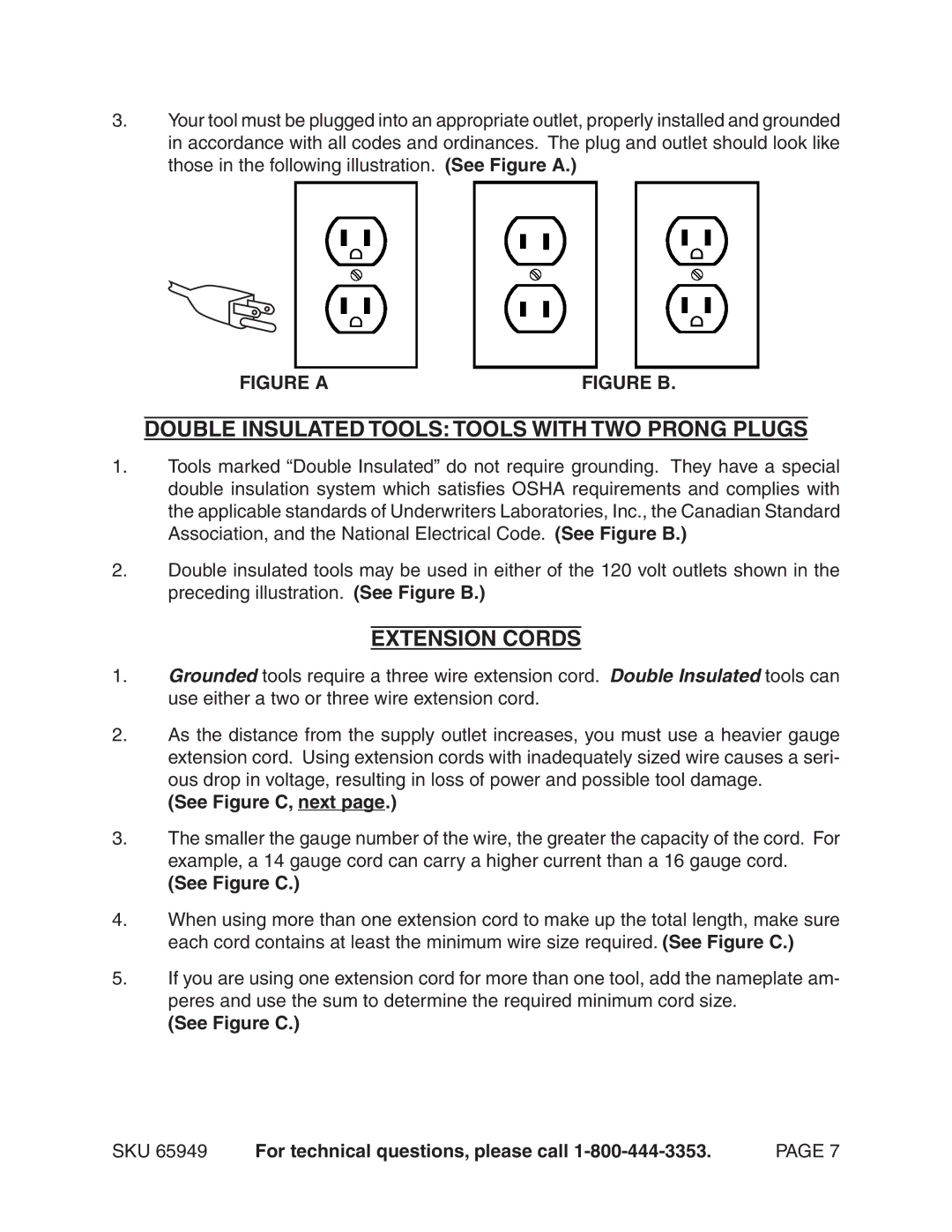
3.Your tool must be plugged into an appropriate outlet, properly installed and grounded in accordance with all codes and ordinances. The plug and outlet should look like those in the following illustration. (See Figure A.)
FIGURE A | FIGURE B. |
Double Insulated Tools: Tools With Two Prong Plugs
1.Tools marked “Double Insulated” do not require grounding. They have a special double insulation system which satisfies OSHA requirements and complies with the applicable standards of Underwriters Laboratories, Inc., the Canadian Standard Association, and the National Electrical Code. (See Figure B.)
2.Double insulated tools may be used in either of the 120 volt outlets shown in the preceding illustration. (See Figure B.)
Extension Cords
1.Grounded tools require a three wire extension cord. Double Insulated tools can use either a two or three wire extension cord.
2.As the distance from the supply outlet increases, you must use a heavier gauge extension cord. Using extension cords with inadequately sized wire causes a seri- ous drop in voltage, resulting in loss of power and possible tool damage.
(See Figure C, next page.)
3.The smaller the gauge number of the wire, the greater the capacity of the cord. For example, a 14 gauge cord can carry a higher current than a 16 gauge cord.
(See Figure C.)
4.When using more than one extension cord to make up the total length, make sure each cord contains at least the minimum wire size required. (See Figure C.)
5.If you are using one extension cord for more than one tool, add the nameplate am- peres and use the sum to determine the required minimum cord size.
(See Figure C.)
SKU 65949 | For technical questions, please call | PAGE 7 |
